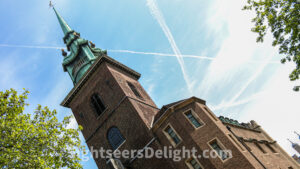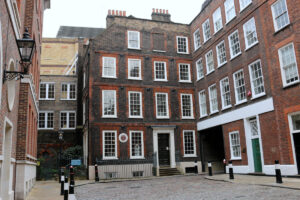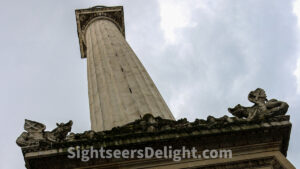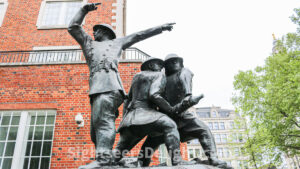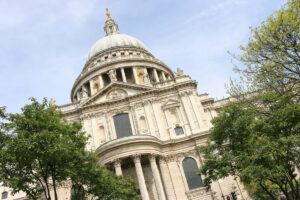All Hallows-by-the-Tower is a historic Anglican church located on Byward Street in the City of London, England. It was dedicated to All Hallows (All Saints) and the Virgin Mary and was sometimes called All Hallows Barking. According various sources, it is believed to be the oldest church in the City of London, founded in AD 675. However, recent research has cast doubt on this claim. Despite surviving the Great Fire of London in 1666, the church suffered significant damage during the Blitz in World War II. It underwent extensive reconstruction and was rededicated in 1957. The church served as the guild church of Toc H, an international Christian organization founded by Tubby Clayton, who served as the church’s vicar from 1922 to 1962.
Dr. Samuel Johnson wrote the dictionary. Literally. Between 1748 and 1759, Johnson paid a £30 rent, and while living in the house compiled his seminal work, A Dictionary of the English Language, published in 1755 and heralded as “one of the greatest single achievements of scholarship.” Wool merchant Richard Gough built the house during the latter half of the 17th century, and after Johnson moved out, the building was used for a number of purposes. The edifice was damaged during World War II, damage that can still be seen today.
The Monument to the Great Fire of London commemorates the Great Fire of London, which started on Sept. 2, 1666. The Monument, as it is colloquially known, was built between 1671 and 1677 on the site of St. Margaret’s, the first church the Great Fire destroyed, and 202 feet west of where the Great Fire started. The Monument is a fluted Doric column built of Portland stone. It is 202 feet tall and topped with a gilded urn of fire.
The National Firefighters Memorial of three bronze statues showing firefighters in action is a tribute to the brave men and women who fought fires during the Blitz in London. The memorial, located on the Jubilee Walkway near St. Paul’s Cathedral, was created to honor the firefighters who fought fires on the streets of London during World War II and to commemorate the service of firefighters throughout the war. Cyril Demarne conceived the idea for the memorial, which was commissioned by the Firefighters Memorial Charitable Trust in 1990. Sculpted by John W. Mills, the monument was unveiled by Queen Elizabeth The Queen Mother on May 4, 1991. In 1998, it was decided to make the memorial a national monument to honor all firefighters in the United Kingdom who lost their lives while on duty, not just during World War II. As a result, the monument was moved from its original location in Old Change Court, the plinth was raised by more than one meter, and the names of all firefighters who died in peacetime were added.
St Paul’s Cathedral, the mother church of the Diocese of London, is the seat of the Bishop of London. The original church was consecrated in 1300; the current church was consecrated in 1697. The 365-foot-tall edifice was the tallest building in London from 1710 to 1967, and its dome is among the highest in the world. It is the second-largest church building in area in the United Kingdom. Over the years, St Paul’s Cathedral has hosted several high-profile events, including the 1981 wedding of Prince Charles and Lady Diana Spencer and jubilee celebrations for Queen Victoria.

